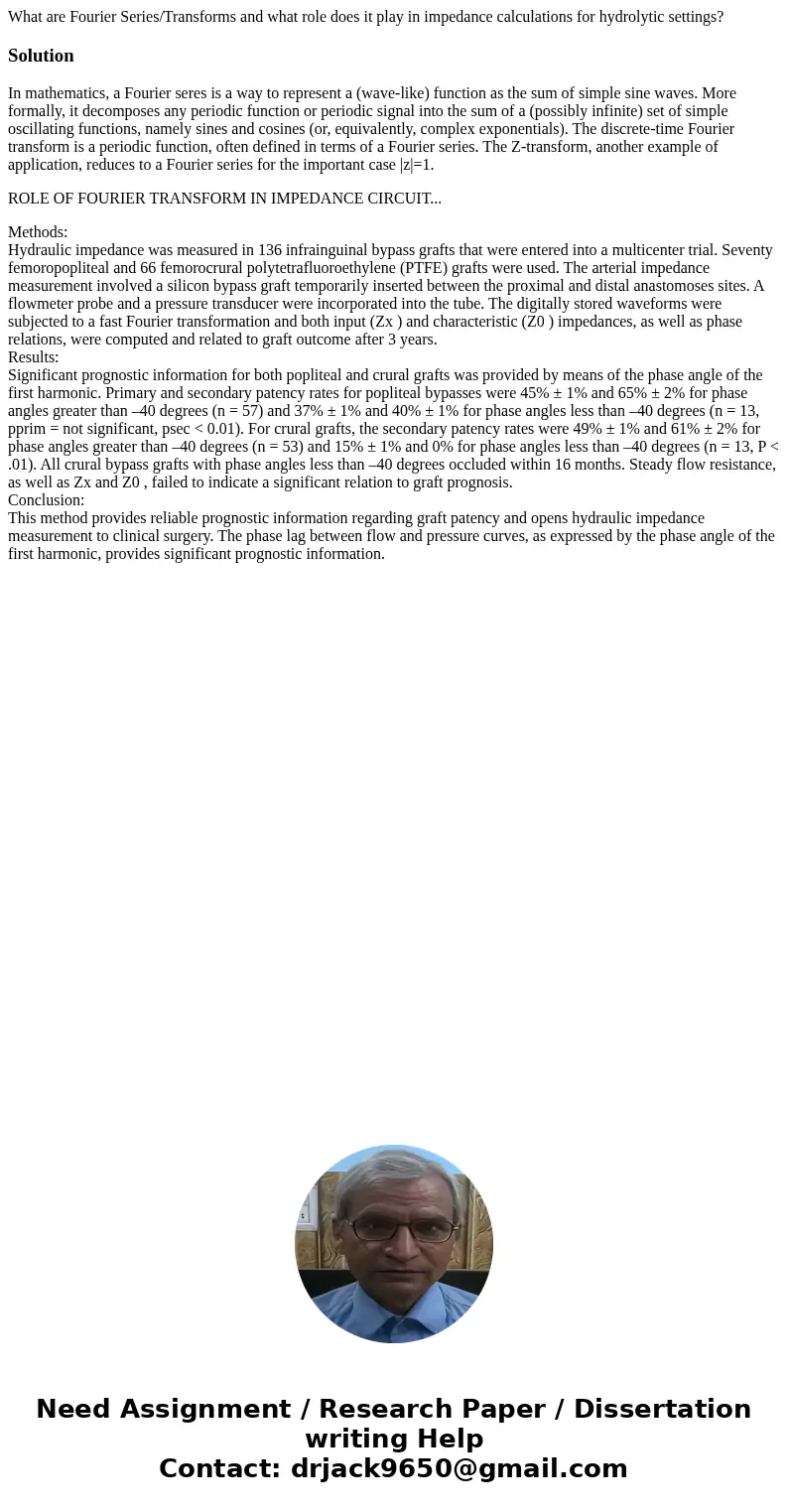What are Fourier SeriesTransforms and what role does it play
What are Fourier Series/Transforms and what role does it play in impedance calculations for hydrolytic settings?
Solution
In mathematics, a Fourier seres is a way to represent a (wave-like) function as the sum of simple sine waves. More formally, it decomposes any periodic function or periodic signal into the sum of a (possibly infinite) set of simple oscillating functions, namely sines and cosines (or, equivalently, complex exponentials). The discrete-time Fourier transform is a periodic function, often defined in terms of a Fourier series. The Z-transform, another example of application, reduces to a Fourier series for the important case |z|=1.
ROLE OF FOURIER TRANSFORM IN IMPEDANCE CIRCUIT...
Methods:
Hydraulic impedance was measured in 136 infrainguinal bypass grafts that were entered into a multicenter trial. Seventy femoropopliteal and 66 femorocrural polytetrafluoroethylene (PTFE) grafts were used. The arterial impedance measurement involved a silicon bypass graft temporarily inserted between the proximal and distal anastomoses sites. A flowmeter probe and a pressure transducer were incorporated into the tube. The digitally stored waveforms were subjected to a fast Fourier transformation and both input (Zx ) and characteristic (Z0 ) impedances, as well as phase relations, were computed and related to graft outcome after 3 years.
Results:
Significant prognostic information for both popliteal and crural grafts was provided by means of the phase angle of the first harmonic. Primary and secondary patency rates for popliteal bypasses were 45% ± 1% and 65% ± 2% for phase angles greater than –40 degrees (n = 57) and 37% ± 1% and 40% ± 1% for phase angles less than –40 degrees (n = 13, pprim = not significant, psec < 0.01). For crural grafts, the secondary patency rates were 49% ± 1% and 61% ± 2% for phase angles greater than –40 degrees (n = 53) and 15% ± 1% and 0% for phase angles less than –40 degrees (n = 13, P < .01). All crural bypass grafts with phase angles less than –40 degrees occluded within 16 months. Steady flow resistance, as well as Zx and Z0 , failed to indicate a significant relation to graft prognosis.
Conclusion:
This method provides reliable prognostic information regarding graft patency and opens hydraulic impedance measurement to clinical surgery. The phase lag between flow and pressure curves, as expressed by the phase angle of the first harmonic, provides significant prognostic information.

 Homework Sourse
Homework Sourse